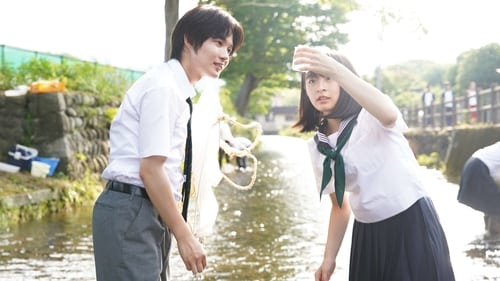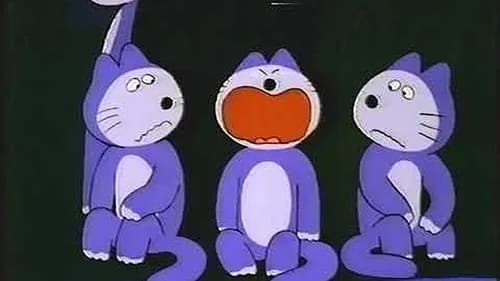
Shozo Hatoba
夫と子供と暮らす岸辺野裕里(松たか子)は、姉の未咲の葬儀で未咲の娘・鮎美(広瀬すず)と再会する。鮎美は心の整理がついておらず、母が残した手紙を読むことができなかった。裕里は未咲の同窓会で姉の死を伝えようとするが、未咲の同級生たちに未咲本人と勘違いされる。そして裕里は、初恋の相手である小説家の乙坂鏡史郎(福山雅治)と連絡先を交換し、彼に手紙を送る。

Music
An elderly woman named Fumiko lived through the battle of Okinawa. Now she is part of the movement protesting the construction of a new American military base in Henoko. This film captures the complex feelings of those who have had to live their lives alongside military bases. It compels us to share in their yearning to bring an end to this battle.

Music
On April 1, 1945, the United States military launched its invasion of the main island of Okinawa, the start of a battle that was to last 12 weeks and claim the lives of some 240,000 people. This film depicts the Battle through the eyes of Japanese and American soldiers who fought each other on the same battlefield, along with Okinawa civilians who were swept up in the fighting. The film also depicts the history of discrimination and oppression forced upon Okinawa by the American and Japanese governments. Carrying up to the current controversy over the construction of a new base at Henoko, the film explores the root causes of the widespread disillusionment and anger expressed by many Okinawans. This ambitious documentary was directed by the American John Junkerman, long-term resident of Japan and Oscar-nominated documentary filmmaker. Okinawa: The Afterburn is a heartfelt plea for peace and an expression of deep respect for the unyielding spirit of the Okinawa people.

Music
Before the Chernobyl disaster, Nadja's village was home to 300 peasant families. After evacuation, only 6 households remain and access to the village is shut off. The remaining villagers continue to raise livestock, cultivate crops, and continue with their lives regardless of contamination.

Music
Shiragaki is renowned for its ceramics. This documentary follows people who must overcome physical disabilities to work in the town.

Music
Senso Daughters focuses on the legacy of the Japanese occupation of Papua New Guinea during the Second World War. It is a legacy that arises from rape, starvation and terror. Sekiguchi's documentary lets the residents of Papua New Guinea, especially the women, tell the story of their three years under Japanese Army rule.

Music
The Havana port of Cuba, which is the stage of the novel "old people and the sea", and Yonaguni Island, which is located on the far west end of Japan, have a similar current like the same latitude. The producer who noticed this interesting resemblance and flew to Yonaguni island for the world of "the old man and the sea". Then, he met with an old fisherman, Shigeru itoko, who took Savion fishing on the sabbani,and took a long time to capture the time spent with the old fishman.

Music
38 years after the Pacific War, 84 victims of a mass suicide ordered by the Japanese military were uncovered in a cave in Yomitan village. This film contains the testimonies of some of the survivors, the story of a sculptor leading bereaved family members in creating a statue of peace, and the resistance of a group of girls against the raising of the Japanese flag at the high school graduation ceremony.

Music
Video version of the picture book 'Hiroshima no pika', based on the art pieces known as The Hiroshima Panels by Iri and Maruki Toshi

Music
Interviews with Burakumin in Osaka, victims of discrimination

Music
ドラネコ大将を中心とする11ぴきの猫はイタズラをくりかえし、街の大人たちは大弱り。警察署長は11ぴきの猫を呼びだし、うるさくしたら解散とお説教。がっかりした猫たちはひげ長じいさん猫から、大きな魚の出てくる昔話を聞く。その魚は11ぴきで食べても一力月はかかるという。街で遊べなくなった猫たちはその魚をとりに行くことにした。仲間で力をあわせれば、怪物魚をやっつけられると、団結だけを頼りに冒険の旅に出発。街を出ると、11ぴきにとって初めての経験が次々と起る。そして、仲間われや数々の苦労の末、11ぴきの猫は、仲間っていいものだと再認識。ひとまわりもふたまわりも大きく成長した11ぴきが、遂にあの大きな魚が住んでいる湖にたどりついた。海のように広く、不気味に静まりかえった湖。大当に大きな魚はいるのだろうか。大きな魚の大きな湖。11ぴきは大きな夢をまるごと食べはじめた。

Music
A man who survived the war carries the will of his comrades in arms, walking across the country visiting the bereaved families.









